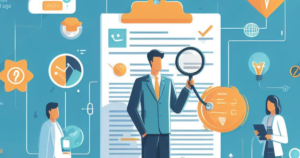Sharing is caring!

In order to maximize collections from patient services billing, it is crucial to optimize the billing process. This introduction will provide you with valuable insights and strategies on how to effectively manage patient services billing for maximum financial success.
Key Strategies to Optimize Patient Services Billing for Maximum Collections
To optimize patient services billing for maximum collections, healthcare organizations should implement key strategies. These include accurately capturing patient information, verifying insurance coverage, and obtaining pre-authorization for services. It is essential to educate patients about their financial responsibilities and provide transparent and easy-to-understand billing statements. Additionally, offering flexible payment options and implementing a robust follow-up process for unpaid balances can significantly improve collections. Regularly reviewing and updating billing policies and procedures, as well as training staff on effective billing practices, are crucial steps in optimizing patient services billing.
Effective Ways to Maximize Collections from Patient Services Billing
Maximizing collections from patient services billing requires implementing effective strategies. One way is to streamline the billing process by utilizing electronic health record systems and automated billing software. These tools can help generate accurate and timely bills, reducing errors and delays. Implementing a proactive approach to revenue cycle management, including regular audits and monitoring of billing processes, can also improve collections. Offering financial counseling and assistance programs to patients can help them understand their payment options and reduce the likelihood of non-payment. Lastly, establishing strong relationships with insurance providers and implementing effective denial management processes can further enhance collections.
Essential Steps to Improve the Collection Process for Patient Services Billing
Improving the collection process for patient services billing involves several essential steps. First, it is crucial to establish clear and concise billing policies and procedures that align with industry standards and regulations. This includes defining payment terms, providing detailed invoices, and offering multiple payment options. Next, healthcare organizations should implement a robust system for tracking and following up on unpaid balances, including sending regular reminders and statements to patients. It is important to train staff on effective communication and negotiation techniques to handle collection calls professionally. Finally, regularly analyzing collection data and identifying trends or areas for improvement can help refine the collection process and maximize revenue.
The Role of a Medical Collector in Maximizing Collections from Patient Services Billing
A medical collector plays a vital role in maximizing collections from patient services billing. They are responsible for managing unpaid patient accounts, including contacting patients to collect outstanding balances. Medical collectors must have strong communication and negotiation skills to effectively resolve payment issues and address patient concerns. They also play a crucial role in verifying insurance coverage, appealing denied claims, and ensuring compliance with billing regulations. By maintaining accurate and up-to-date patient records and staying informed about industry changes, medical collectors can maximize collections and contribute to the financial success of healthcare organizations.
Responsibilities Included in a Medical Collector Job Description
A medical collector’s job description typically includes several key responsibilities. These may include reviewing and analyzing patient accounts to identify outstanding balances, contacting patients to collect payments, and negotiating payment plans or settlements. Medical collectors are also responsible for verifying insurance coverage, appealing denied claims, and resolving billing discrepancies. They must maintain accurate and detailed records of all collection activities and communicate effectively with patients, insurance providers, and internal teams. Additionally, medical collectors may assist in developing and implementing collection policies and procedures to improve overall collection efforts.
Ensuring Compliance while Maximizing Collections from Patient Services Billing
While maximizing collections from patient services billing, healthcare organizations must ensure compliance with relevant laws and regulations. This includes adhering to the Health Insurance Portability and Accountability Act (HIPAA) to protect patient privacy and confidentiality. It is essential to follow billing and coding guidelines set by government programs such as Medicare and Medicaid. Healthcare organizations should also stay updated on changes in healthcare regulations and implement necessary measures to maintain compliance. By integrating compliance into their collection processes, healthcare organizations can maximize collections while avoiding legal and financial risks.
Common Challenges Faced in Maximizing Collections from Patient Services Billing
Maximizing collections from patient services billing can be challenging due to various factors. One common challenge is the complexity of insurance billing and reimbursement processes, which often involve multiple parties and intricate coding requirements. Additionally, patients’ financial situations and ability to pay can vary significantly, leading to difficulties in collecting outstanding balances. Limited resources and staff training in effective collection practices can also hinder collection efforts. Furthermore, navigating changing healthcare regulations and compliance requirements can pose challenges. Overcoming these challenges requires implementing efficient processes, leveraging technology, and providing ongoing staff training and support.
Leveraging Technology and Automation to Enhance Collections from Patient Services Billing
Technology and automation can significantly enhance collections from patient services billing. Electronic health record systems and billing software can streamline the billing process, reduce errors, and improve efficiency. Automated reminders and statements can be sent to patients, increasing the likelihood of timely payments. Additionally, predictive analytics and data-driven insights can help identify high-risk accounts and prioritize collection efforts. By leveraging technology, healthcare organizations can optimize their collection processes, improve accuracy, and ultimately increase revenue.
Best Practices for Managing Patient Accounts and Increasing Collections from Billing Services
Managing patient accounts effectively is crucial for increasing collections from billing services. Implementing best practices such as accurate and timely documentation of patient encounters, including detailed billing codes, can improve reimbursement rates. Regularly reviewing and updating patient information, insurance coverage, and payment terms can prevent billing errors and delays. Offering clear and transparent billing statements, along with easy-to-understand explanations of charges, can reduce patient confusion and disputes. Additionally, establishing a dedicated and well-trained billing team, implementing efficient denial management processes, and regularly monitoring key performance indicators can help maximize collections and optimize revenue.
Effective Communication with Patients to Optimize Collections from Billing Services
Effective communication with patients is essential to optimize collections from billing services. Healthcare organizations should ensure clear and concise communication regarding patient financial responsibilities, payment options, and billing inquiries. Providing upfront cost estimates and offering financial counseling can help patients understand their obligations and make informed decisions. It is crucial to address patient concerns promptly and professionally, resolving any disputes or billing discrepancies in a timely manner. By establishing open lines of communication and fostering a positive patient experience, healthcare organizations can improve collections and maintain patient satisfaction.
Potential Benefits of Outsourcing Medical Collection Services for Maximizing Collections from Patient Services Billing
Outsourcing medical collection services can offer several potential benefits for maximizing collections from patient services billing. By partnering with a specialized collection agency, healthcare organizations can leverage their expertise and resources to improve collection rates. Outsourcing allows healthcare organizations to focus on core operations while entrusting the collection process to professionals. Collection agencies often have advanced technology and software systems that can streamline the billing and collection processes. Additionally, outsourcing can potentially reduce staffing and administrative costs associated with in-house collection efforts. However, careful consideration of the agency’s reputation, compliance practices, and alignment with organizational goals is crucial before outsourcing collection services.
Implementing Effective Policies and Procedures to Improve Collections from Patient Services Billing
Implementing effective policies and procedures is crucial for improving collections from patient services billing. Healthcare organizations should establish clear guidelines for patient registration, insurance verification, and billing processes. This includes defining payment terms, creating standardized billing codes, and ensuring accurate documentation of patient encounters. It is essential to train staff on these policies and provide regular updates to ensure compliance and consistency. Additionally, implementing a systematic approach to follow up on unpaid balances, including sending regular statements and reminders, can significantly improve collections. Regularly reviewing and updating policies and procedures based on industry changes and feedback from staff and patients is also essential.
Key Metrics and Indicators to Measure the Success of Collection Efforts in Patient Services Billing
Measuring the success of collection efforts in patient services billing requires tracking key metrics and indicators. One important metric is the collection rate, which measures the percentage of billed charges that are collected. The average days in accounts receivable (AR) is another crucial indicator, representing the average time it takes to collect payments. Denial rate, which measures the percentage of claims denied by insurance companies, can indicate the effectiveness of billing and coding practices. Additionally, tracking the percentage of patient balances collected and the number of accounts in collections can provide insights into the overall success of collection efforts. Regularly analyzing these metrics and benchmarking against industry standards can help identify areas for improvement and measure the effectiveness of collection strategies.
In conclusion, optimizing patient services billing is essential for healthcare organizations to maximize collections. By implementing key strategies such as accurate patient information capture, insurance verification, and pre-authorization, organizations can improve their collection efforts. Educating patients about their financial responsibilities and providing transparent billing statements are also crucial. Offering flexible payment options and establishing a robust follow-up process for unpaid balances can significantly enhance collections. Regularly reviewing and updating billing policies, training staff on effective practices, and leveraging technology can further optimize the collection process. Overall, prioritizing efficient billing practices and effective communication with patients are key to achieving maximum collections in patient services billing.




